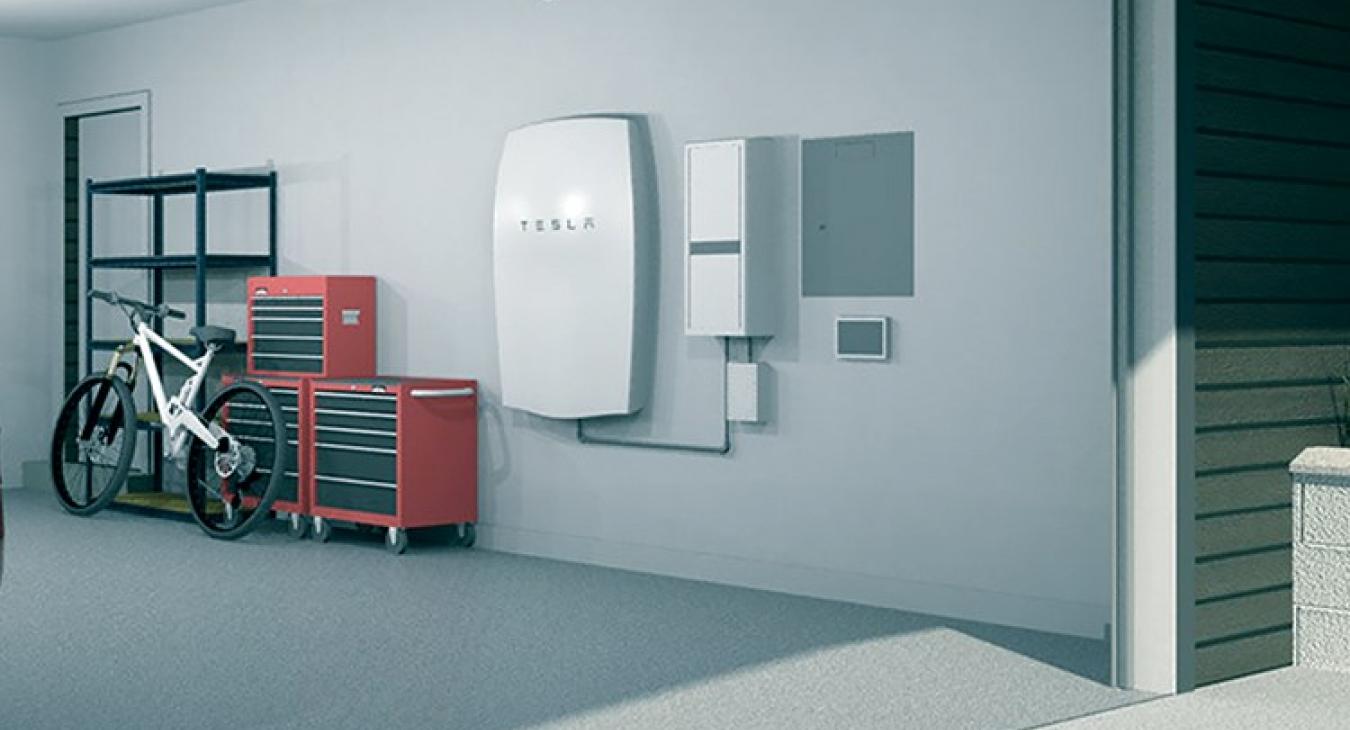Battery storage units like the Tesla Powerwall can save your solar array's overproduction. Photo courtesy Tesla Motors, Inc.
By Alyssa Dussetschleger
This year, Bluebonnet’s Solar Day wasn’t just about solar panels. The live webinar included information on electric innovations in battery storage and vehicles, too.
The sixth annual event, on Oct. 16 this year, showcased a presentation from Micah Jasuta of the Texas Solar Energy Society; information and ideas from Bluebonnet Electric Cooperative members Aaron Contreras, John White and Jeff Nelson; and a Q&A about the installation and benefits of solar power systems and battery storage.
If you couldn’t join us online that day, watch the recording at bluebonnet.coop/solar. Here are our top 6 takeaways from the day:
1. When you’re ready to choose a solar power system installer, the U.S. Department of Energy recommends you get at least three bid proposals. Be skeptical and ask questions of installers before you choose. Talk to friends and family with solar panels, search the business member page at TXSES.org, and read review websites like the Better Business Bureau, Yelp, solarreviews.com and North America’s board of energy practitioners at nabcep.org. It’s a good idea to ask an installer if they are certified by the North American Board of Certified Energy Practitioners. Don’t just go by star ratings, either. Read the comments and reviews.
2. Research battery storage options that suit the solar energy you produce. A battery’s storage capacity determines how long it can power parts of your home. Common energy capacity ranges from 5 to 15 kilowatts. Battery storage can provide a lot of power in a short time or less power over a long time. Apps and online portals can help you monitor your solar production to maximize its use throughout the day.
3. Bluebonnet inspects your solar array to ensure it is safe before we connect it to our electric grid. You’ll be put on the cooperative’s distributed generation rate and get paid for overproduction, which is when you produce more power than you are using and the excess is returned to the cooperative’s grid.
4. Battery storage can save your overproduction of electricity for use when the sun isn’t shining or during a power outage. Place your battery backup near your breaker panel or in the garage to protect it from the elements. Depending on the brand and size of your battery storage, it may hold enough power to charge all or part of your home from one to seven days.
5. The federal Solar Investment Tax Credit remains at 26% through the end of 2022. It’s a credit that can be claimed on your federal income taxes for a percentage of the money you paid to install a solar array. The credit is available in every state and is scheduled to decrease to 22% in 2023.
6. Thinking about an electric vehicle? Consider your driving habits and distances. Avoid “range anxiety” by charging up your vehicle before the power level gets low.
Download this story as it appeared in the Texas Co-op Power magazine »





